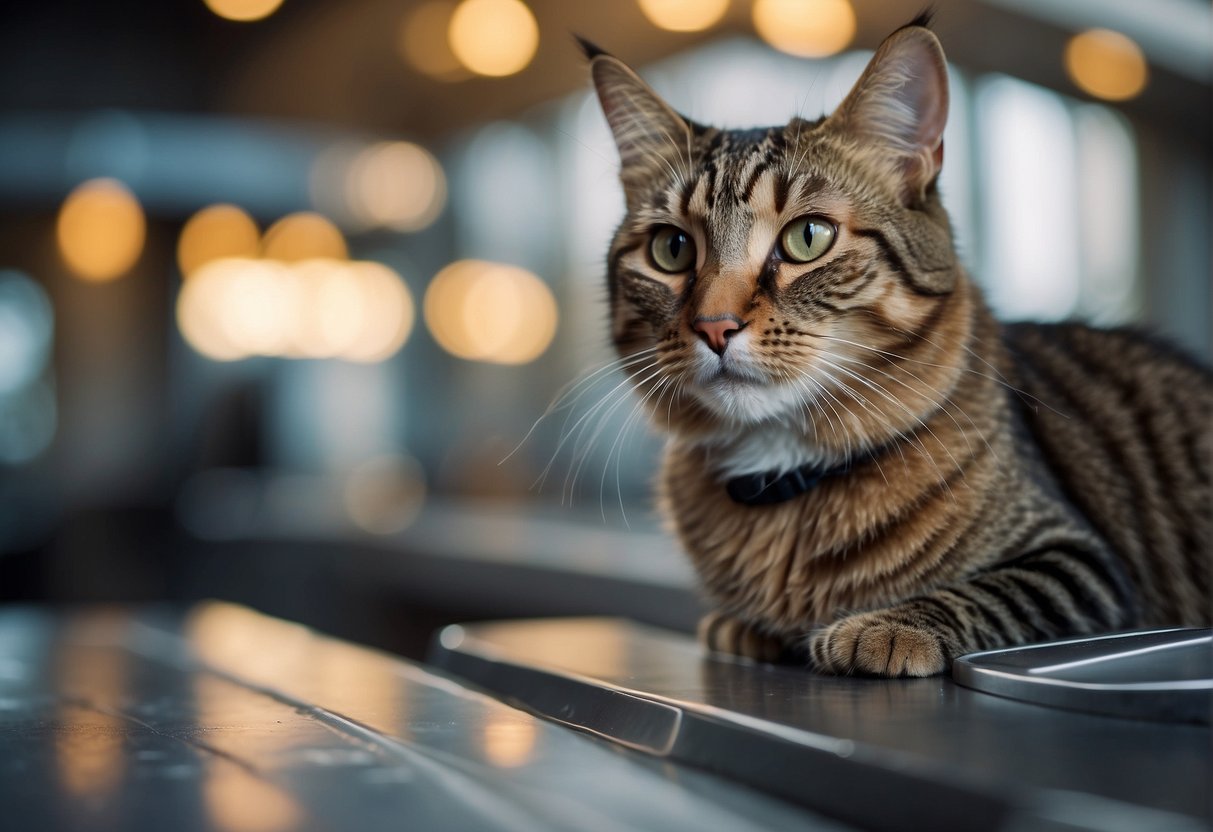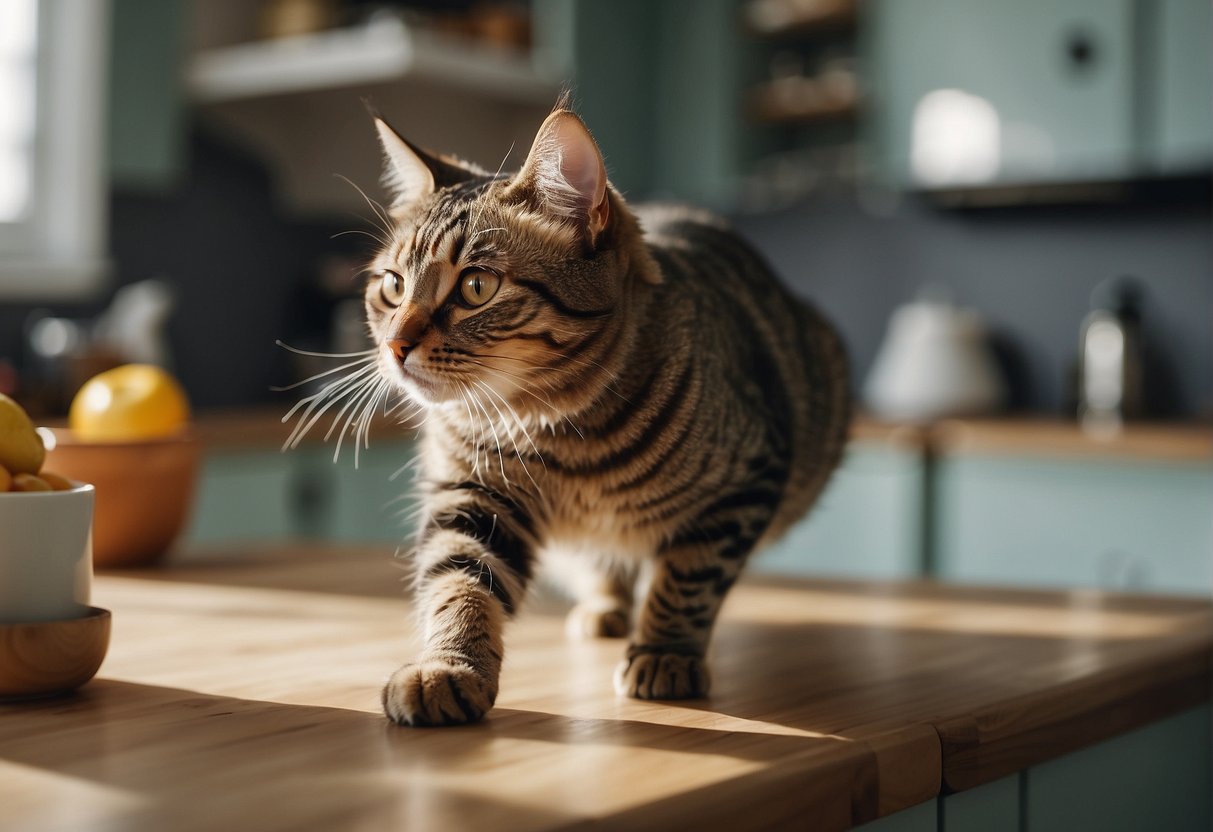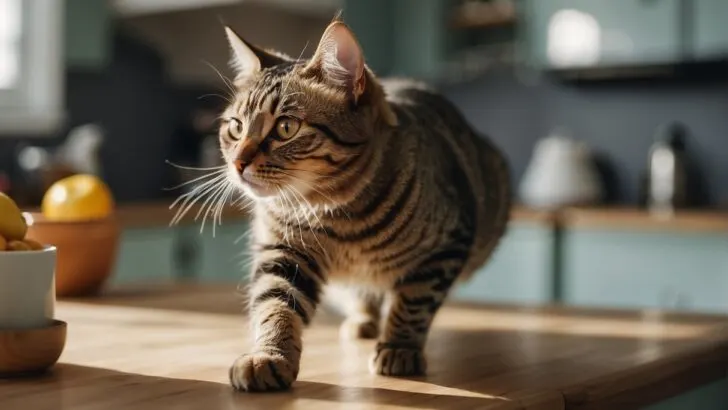To stop cats from jumping on counters, it’s important to understand that your feline friend’s high-flying antics are a natural expression of their agility and instinctual need for a bird’s-eye view of their territory. Tools like aluminum foil or double-sided tape can be unappealing to a cat’s sensitive paws, often discouraging them from leaping onto surfaces you prefer to keep cat-free.

You might also consider providing alternative high perches or cat trees to satisfy their climbing urges. By redirecting their behavior to appropriate areas, you create a win-win situation where your cat can observe their kingdom without infringing on your kitchen space.
Managing this aspect of your cat’s behavior may involve a bit of trial and error. Every cat is unique, and what discourages one may not bother another. It’s all about finding the right combination of deterrents and incentives to help your cat understand the house rules while still allowing them to indulge in their love of high places.
Mangaging Your Cat’s Counter Jumping Behavior
When you observe your cats leaping onto kitchen counters, it’s a blend of natural instincts and environmental cues at play. Let’s explore the reasons behind this feline tendency so you can address it effectively.
Exploring Feline Curiosity
Cats are naturally curious creatures; their innate desire to explore can lead them to higher ground, like your kitchen counters. This vantage point offers a panoramic view of their territory, allowing them to survey their domain and satisfy their nosy nature.
The Role of Age in Counter Surfing
Younger cats often exhibit more agility and a stronger impulse for jumping and climbing, making counter surfing a common behavior. As cats grow older, this desire may wane but it’s not uncommon for mature cats to maintain these habits if they’ve been reinforced over time.
Environmental Factors Influencing Behavior
Your cat’s environment plays a significant role in their behavior. A lack of stimulating play areas or high perches in the vicinity might drive your cat to seek out elevated areas such as kitchen counters. Environmental enrichment with cat trees or window perches can offer appealing alternatives.
Food Motivation and Counters
Cats often jump on counters in pursuit of food. Whether it’s the scent of cat food, human food, or simply the remnants of a meal, these olfactory cues can be irresistible. Ensuring no food is left within paw’s reach can be pivotal in deterring this behavior.

Preventive Measures and Deterrents
Your feline friends are instinctively curious, so it’s important to provide clear, consistent cues that counters are off-limits.
Safe Deterrent Techniques
To effectively keep your cats from treating the kitchen countertop as their personal lounge area, starting with safe deterrent techniques is essential. Consider these options:
- Double-sided tape: Cats dislike the sticky sensation on their paws, so placing double-sided tape along the edge of the counter creates an uncomfortable surface they’ll want to avoid.
- Aluminum foil: Laying sheets of aluminum or tin foil across the counter can have a similar deterrent effect due to the unsettling noise and feel under their paws.
The Power of Unpleasant Associations
Cats learn through experience, and creating unpleasant associations can deter them from jumping on counters:
- Noise deterrents: Set up a few empty soda cans filled with coins on the counter edge. When your cat jumps up and knocks them over, the clatter discourages future attempts.
- Smell deterrents: Cats are sensitive to smells, and certain ones can keep them away. Citrus scents are often disliked by cats, so using lemon-scented cleaning sprays can help keep your surfaces both clean and cat-free.
It’s important to note, your cat should never feel threatened or scared. The goal is to make counters unattractive, not frightening. Deterrents should be annoying, but not harmful or distressing.
Creating Alternatives to Counter Jumping
Offering appropriate structures and stimuli can redirect their interest and meet their needs in a positive manner.
Providing Appropriate Cat Trees and Perches
Cats naturally seek higher ground for a good view and safety. Meet this need by investing in cat trees with multiple levels, or install shelves and perches near a window for some captivating bird-watching.
Ensure these alternatives are stable and placed in your cat’s favorite room so they become more enticing than the counters.
Interactive Toys and Distractions
Keeping your cat entertained is key. Fill their environment with interactive toys that require their hunting skills, like laser pointers or feather wands. The goal is to make playtime so engaging that those counters start to look dull in comparison. Rotate toys to keep things fresh and exciting for your furry friend.
The Use of Rewards and Positive Reinforcement
When your cat chooses the cat tree over the counter, it’s a big win. Immediately reward them with treats and affection. This positive reinforcement helps strengthen your bond and teaches them that good choices come with tasty benefits. Feeding them on their perch can also associate that spot with being fed, keeping their interest locked on their safe, new hangout spot.

My name is James, and welcome to FAQCats!
Along with our team of cat owners, expert pet enthusiasts, and pet professionals, we aim to write engaging helpful, engaging content about cats. At FAQCats we strive to provide content that’s accurate and fun to read. Our team writes about everything related to cats; even the most complex of topics. Through extensive research and caring for our own fur-pals, we’re able to provide something cat owners worldwide will love. Have a look around, and leave us feedback anytime!

